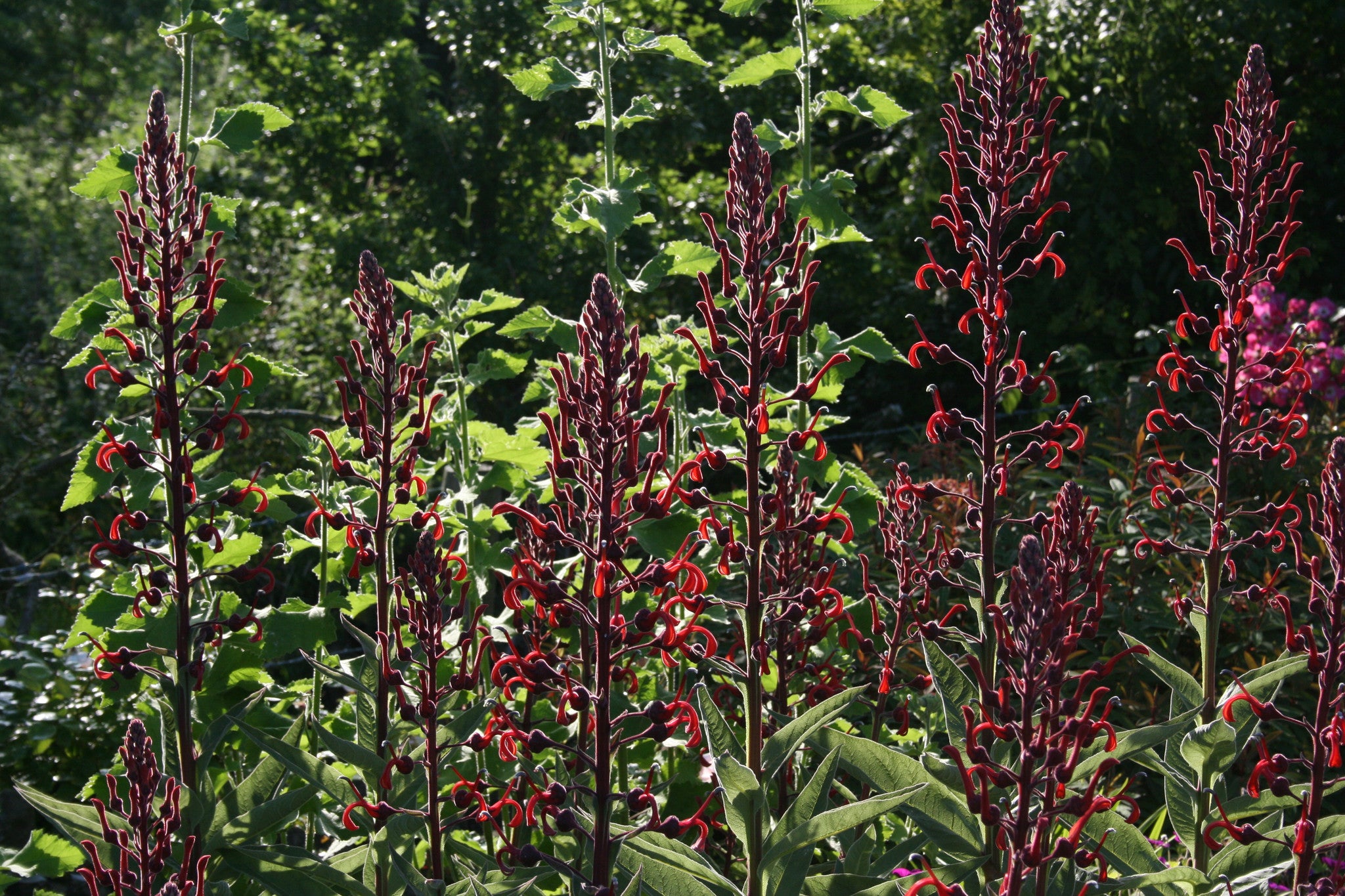Lobelia tupa Archibald's form
Approx. 0.5 litre pot
About this cultivar:
Lobelia tupa Archibald's form was found by the late Jim Archibald (1941-2010) in Chile. Striking orange-red to scarlet flowers produced en masse in summer over grey-green leaves. We have ours in sun and in part-shade. A bit of a show stopper!
- Position: Full sun, partial shade
- Soil: Almost any soil, grows well in Ballyrobert
- Flowers: July, August, September
- Other features: -
- Hardiness: Fully hardy, grows well in Ballyrobert
- Habit: Clump forming
- Foliage: Deciduous
- Height: 120 - 180 cm (4 - 6 ft)
- Spread: 60 - 90 cm (2 - 3 ft)
- Time to full growth: 2 to 5 years
- Plant type: Herbaceous Perennial
- Colour: Green, red
- Goes well with: -
About this genus:
Lobelia (lo-be-le-a) is a genus named after the Belgian botanist Matthias de Lobel (1538–1616). It is in the bell-flower family (Campanulaceae) comprising almost 400 species that are distributed worldwide.
Lobelia prefers damp soils and in the wild is often seen growing in boggy places like swamps in sun or part shade. The flowering stalks of Lobelia arise from flat green winter rosettes and provide rich jewel tones of red, pink, blue and more. Lobelia flowers generally begin forming in midsummer on tall stalks and may last into autumn. It is a tough, low maintenance plant which makes it perfect for wet gardens.
According to the Victorian practice of floriography or language of flowers, sending a floral arrangement of Lobelia was a sign of malevolence or ill will. Perhaps that was tied to one of the traditional herbal uses of Lobelia which was to induce vomiting.




